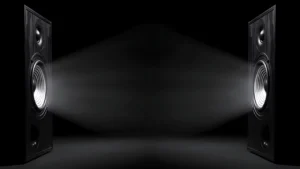Speakers are always louder when wired in parallel.
Do you ponder which is better: wiring speakers in parallel or series? You aren’t the only one! In this article, we’ll discuss the differences between each configuration. We’ll help you decide which option is best for you. Let’s get started!
Is it louder to connect speakers in series or parallel?
Speaker wiring can be either series or parallel. These changes sound quality and power output. This article looks at the differences between these two types of wiring. Many people think parallel wiring makes speakers louder. We’ll look at why, and how impedance affects loudness. Also, how to correctly set up speakers. Let’s learn about series and parallel speaker wiring!
In This Article:
Definition of Series and Parallel Wiring
Understanding series and parallel wiring are crucial to grasping how speakers work. When two or more are connected in series, they share the same input signal. Thus, each one gets the same amount of voltage and current, which produces a louder sound. With parallel wiring, each speaker is directly connected to its own output. This allows each to generate its own volume level, resulting in a lower overall loudness.
If you need high sound levels from your PA system or audio gear, it’s essential to know the pros and cons of series and parallel wiring. To get maximum loudness, you must wire in series, although this depends on speaker size and impedance.
- Series connections are best for smaller speakers with identical impedances (e.g., all 4 ohms).
- Parallel works better for large loudspeakers with higher impedances (8 ohms).
To get the most from your setup, consider these variables before deciding between series or parallel wiring speaking system models.
Check Also: How to Connect External Speakers to Vizio TV?
Advantages and Disadvantages of Series Wiring
Connecting multiple speakers to an amp can be done in series or parallel. Series wiring links each speaker, connecting the positive terminal of one to the negative terminal of the next. This increases resistance and produces higher wattage output levels.
The key benefit of series wiring is a higher output level and a fuller tone. But it can make the speakers too loud for some music. Also, with some amplifiers, too many speakers wired together can reduce sound quality due to cable runs.
Parallel wiring allows more power from the amp to be used. However, tonally it won’t sound as full or powerful as series wiring.
Advantages and Disadvantages of Parallel Wiring
Parallel wiring is a great way to get multiple speakers to sound louder and has a fuller sound. Before deciding which wiring method to use, it’s important to know the pros and cons of parallel versus series wiring.
Advantages of Parallel Wiring:
- The total impedance of the cabinet/amplifier is lowered, making the speakers louder.
- It helps extend the life of amplifiers by decreasing their power output.
- Each speaker gets the same power so no one is overpowered by another.
Disadvantages of Parallel Wiring:
- Sound quality and production from each driver do not necessarily improve.
- If one driver has too much bass, this can throw off the balance of the other drivers, even if they are all set up right.
Why Speakers Are Louder in Parallel?
When speakers are wired in parallel, they will be louder than when wired in series. This is because the total impedance of the system decreases with parallel wiring. Series wiring increases the total impedance, resulting in a decrease in power due to electrical resistance (ohms).
Ohm’s Law states that Voltage = Current x Resistance. So, if the resistance (R) of a speaker increases, the voltage must also increase for the current to remain constant. More voltage equals increased sound levels, so speakers connected in series will be quieter than those in parallel.
Parallel connection of speakers also gives more control over tone. With a series connection, each speaker has its own signal path, while with parallel wiring, both signal paths are combined, resulting in one larger sound cone and voicing all tones at an equal volume. This increases tone clarity and intelligibility.
Knowing these facts can help you decide which type of wiring is best for your situation when installing or replacing speakers.
How to Wire Speakers in Parallel?
If you want to boost sound from two or more speakers, connecting them in series or parallel is a good option. Adding wattage together in series increases the volume. Paralleling speakers adds impedance together, creating louder sounds.
It’s essential to use the same model and size of the speaker when wiring. Mismatched speaker sizes affect the total impedance and can damage sound quality. Unequal frequency response between speakers can occur if components don’t match.
Paralleling multiple speakers lets you have higher wattage output without stressing the amplifier. Fewer large speakers are recommended for a louder effect due to the increased load on the amp. Use at least two cables per connection for better conductivity and less risk of power loss over longer runs.
To wire speakers in parallel:
- Connect the positive lead from the amplifier into each input terminal or cable on the first set of left and right stereo pairs.
- Connect each negative lead to its respective input terminals.
- Join both first sets with another cable at each output terminal or binding post.
- Repeat until all pairs are connected.
- Plug your other end into the amp/receiver.
In summary, wiring speakers in parallel creates louder output than wiring them in series. Ensure components match for better results and equal frequencies and power!
Conclusion
Weighing the pros and cons, it’s fair to say: speakers are always louder when wired in parallel. This applies to all shapes and sizes, and systems. Wiring in series can reduce overall sound due to extra resistance, and may lower fidelity. Parallel wiring increases total load impedance, keeping speaker impedance, and creating a powerful sound with excellent clarity. For the best results, wire speakers in parallel.




